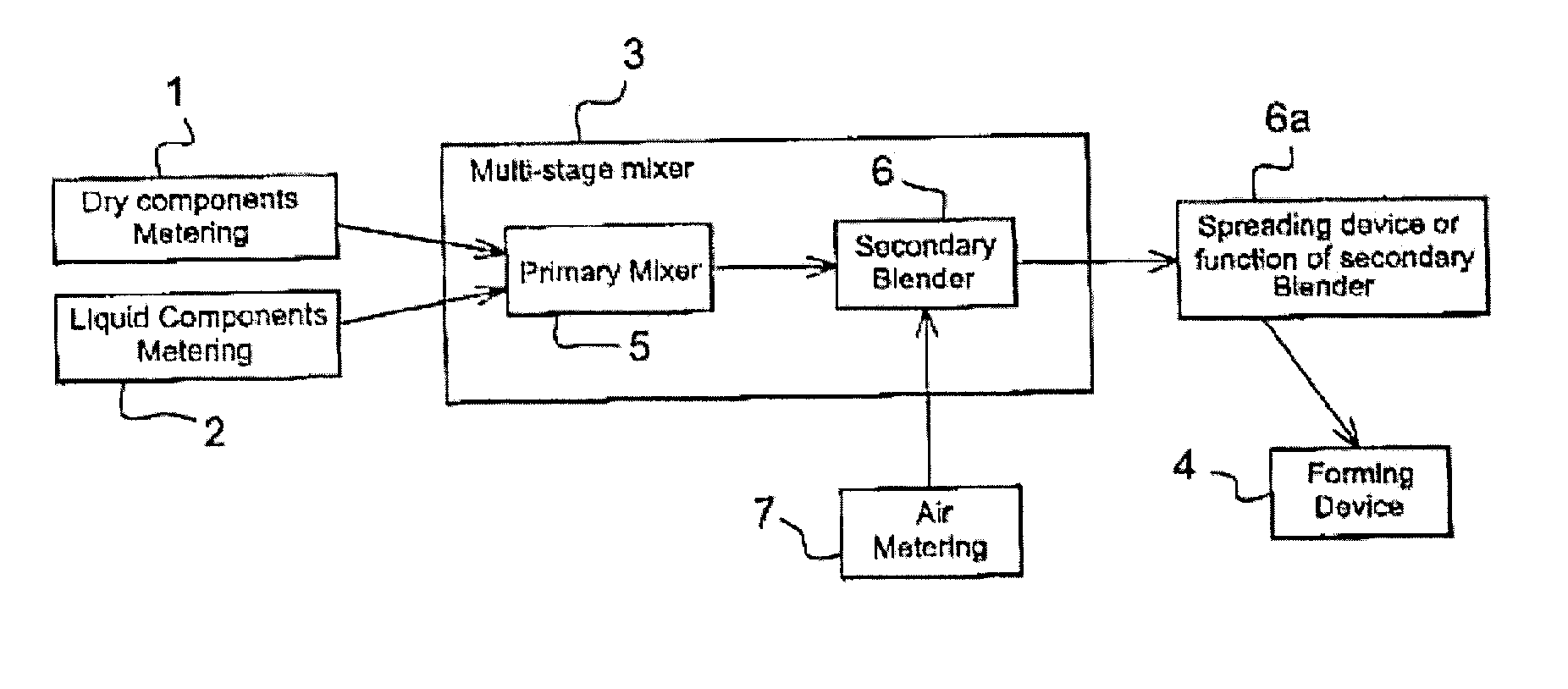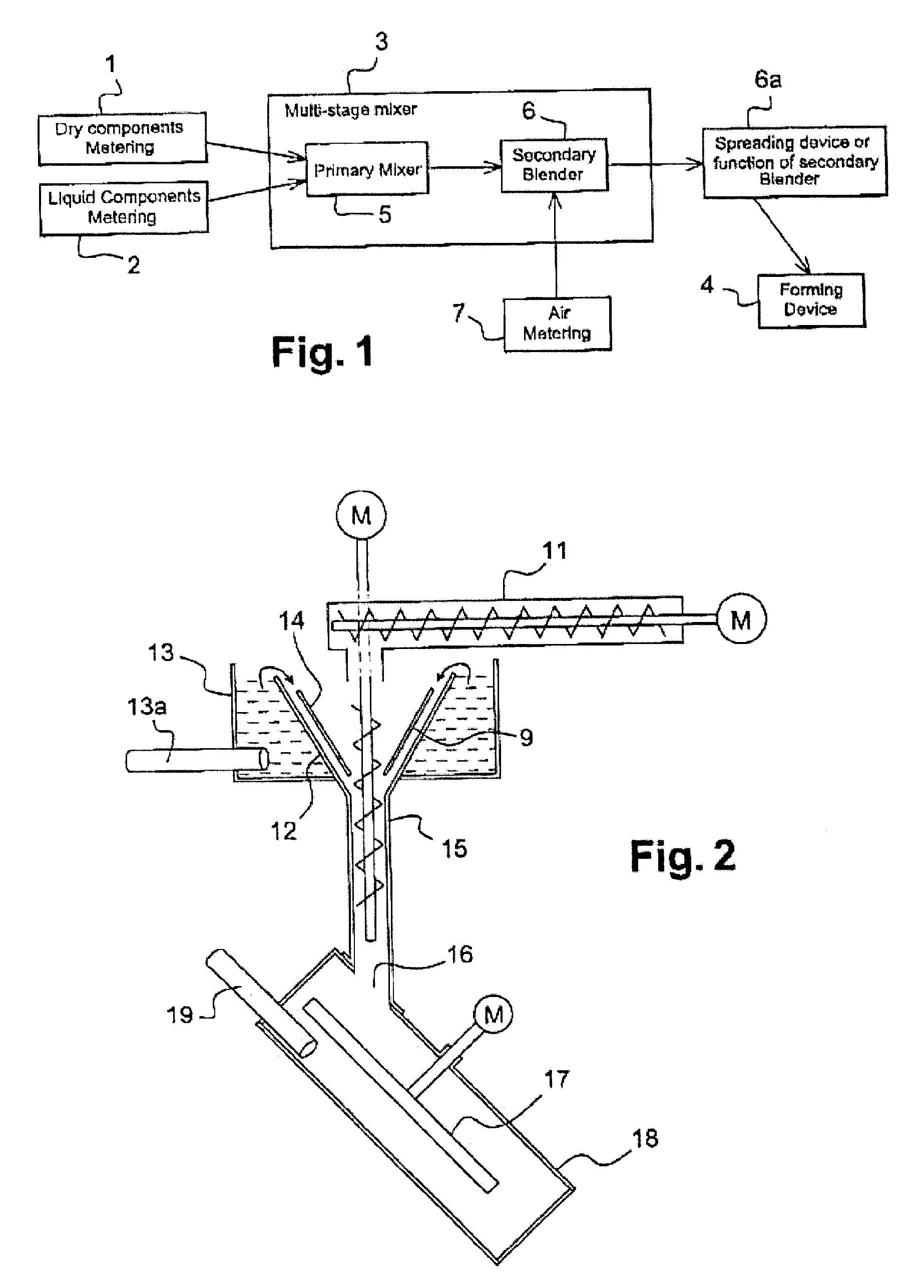Process And Apparatus For Manufacturing Set Cellular Cement
a technology of cellular cement and cement slurry, which is applied in the field of process and apparatus for manufacturing cellular cement, can solve the problems of reducing the final strength of the gypsum matrix, reducing the foam efficiency, and affecting the quality of the cement, and achieves the effect of improving the properties
- Summary
- Abstract
- Description
- Claims
- Application Information
AI Technical Summary
Benefits of technology
Problems solved by technology
Method used
Image
Examples
examples
[0087] Samples for comparison in flexural strength were prepared in the following composition:
Weight (php, for 100 partsComponentof plaster)Plaster100Ball mill accelerator0.44Starch0.48Potash (dry)0.1Retarder liquid 35% active0.014Plasticizer liquid 40% active0.27Foaming agent liquid 40% active0.16Water70
[0088] The method used for manufacturing conventional formulations in the laboratory is as follows. Weigh the dry components together except the potash and dry blend. Foaming agent is blended in 30% of the gauging water and foamed for 60 seconds in a Waring® blender. Weigh 70% of the water the plasticizer, retarder and potash, blended together and kept apart from the foam. Dry components are placed in a Hobart® rotating orbital mixer in a bowel with a wire whisk mixing attachment. Water and additives are poured on the dry materials and agitated for 5 seconds on speed 2. The mixer is stopped and the speed changed to speed 3. Prefabricated foam is added to the mixing bowel and mixed...
PUM
| Property | Measurement | Unit |
|---|---|---|
| diameter | aaaaa | aaaaa |
| length | aaaaa | aaaaa |
| thickness | aaaaa | aaaaa |
Abstract
Description
Claims
Application Information
 Login to View More
Login to View More - R&D
- Intellectual Property
- Life Sciences
- Materials
- Tech Scout
- Unparalleled Data Quality
- Higher Quality Content
- 60% Fewer Hallucinations
Browse by: Latest US Patents, China's latest patents, Technical Efficacy Thesaurus, Application Domain, Technology Topic, Popular Technical Reports.
© 2025 PatSnap. All rights reserved.Legal|Privacy policy|Modern Slavery Act Transparency Statement|Sitemap|About US| Contact US: help@patsnap.com



